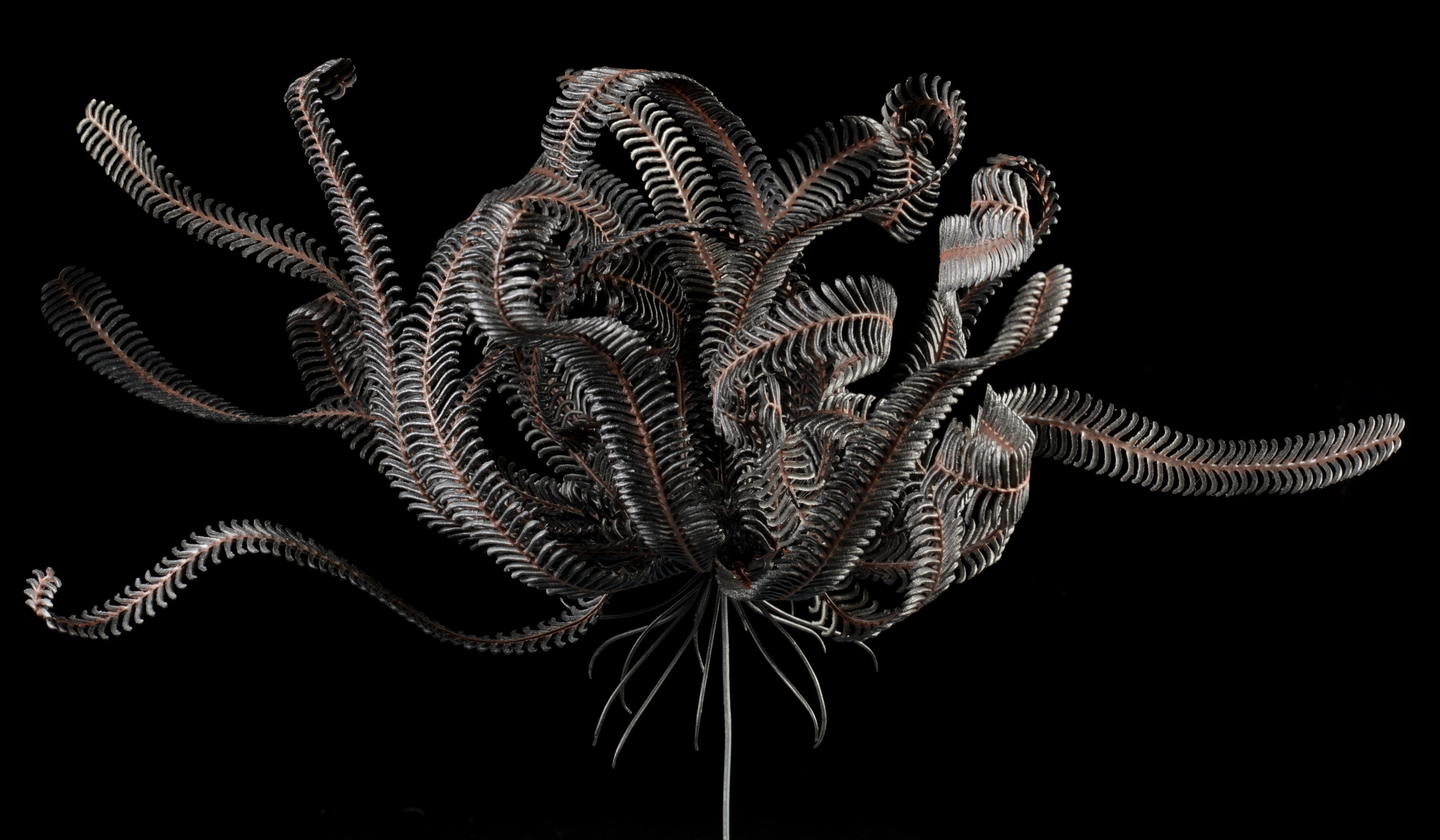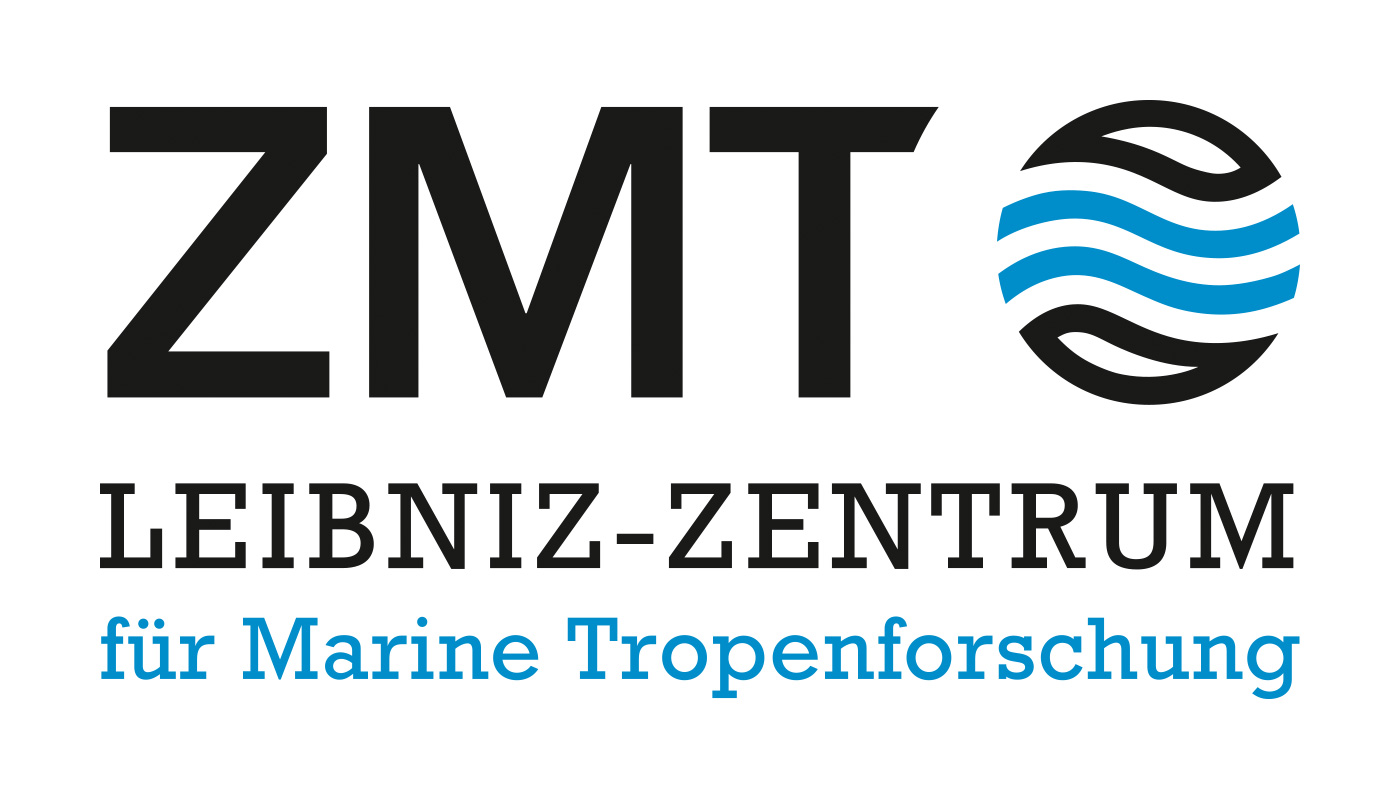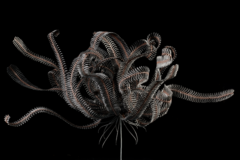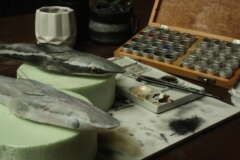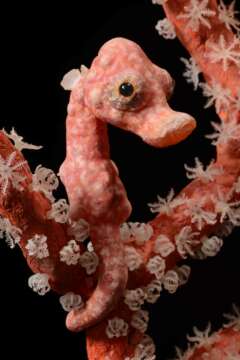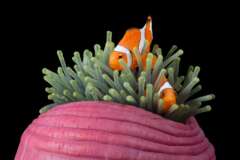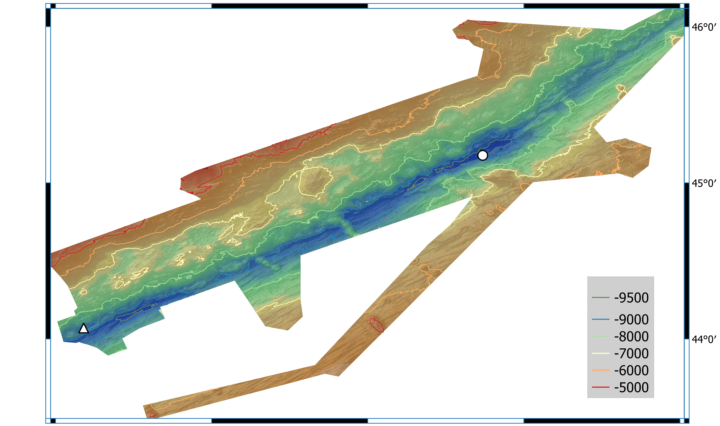Press material
To the permanent exhibition "Coral Reef"
Here you will find all media-relevant information and press material on the “Coral Reef” themed room as part of the New Museum renovation project.
Coral reefs are, besides the tropical rainforests, the ecosystems with the greatest biodiversity and productivity worldwide. While they cover only about 0.1 percent of the ocean floor, they harbor a third of the marine fauna. The diversity of its fascinating, brilliantly colored organisms can be experienced in the new coral reef exhibition. In a 6 meters long and 2.50 meters high coral reef installation, visitors can discover more than 3,000 objects: from porcupinefish to dancing feather stars to a hunting school of whitetip reef sharks

